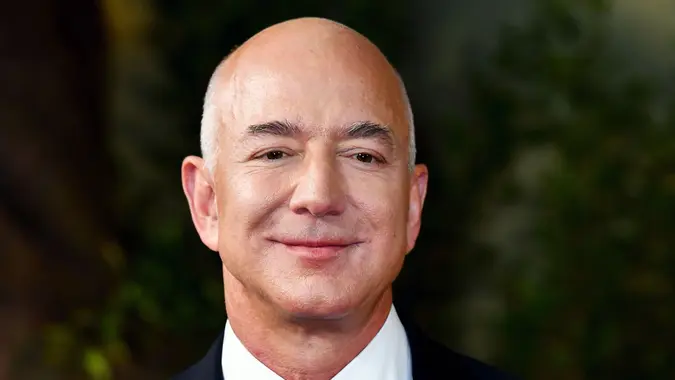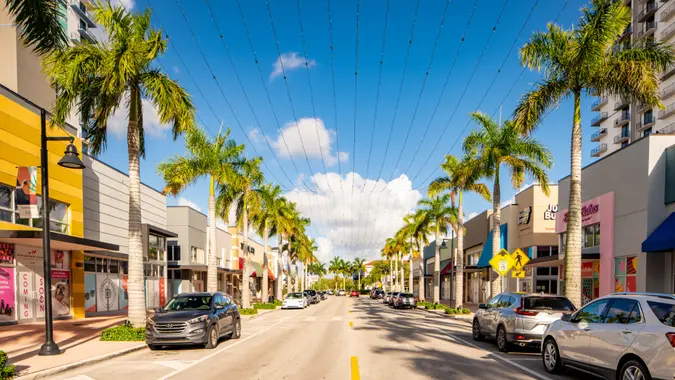More Than Half of Americans Rely on Debt To Cover $500 Emergencies — Here’s Why

Commitment to Our Readers
GOBankingRates' editorial team is committed to bringing you unbiased reviews and information. We use data-driven methodologies to evaluate financial products and services - our reviews and ratings are not influenced by advertisers. You can read more about our editorial guidelines and our products and services review methodology.

20 Years
Helping You Live Richer

Reviewed
by Experts

Trusted by
Millions of Readers
The general guideline for emergency funds is that you should save enough money to cover three to six months’ worth of everyday expenses. If your household expenses are $2,000 a month, for example, then your fund should be at least $6,000.
In reality, many Americans don’t have nearly that much. The median emergency savings in the U.S. is $600, according to research from Empower. More than one-fifth (21%) have no emergency fund at all.
This means a lot of Americans need to tap into credit to pay emergency bills.
A recent CreditOne Bank survey of 1,000 U.S. consumers found that more than half (51%) rely on a credit card to cover a $500 emergency expense. Nearly three in four would need a credit card to survive a financial emergency, but only one in four actually have a card set aside for that purpose.
Why do so many Americans rely on debt to cover $500 emergencies? Here’s a deeper look.
Inadequate Emergency Savings
One big reason so many consumers rely on debt to pay emergency expenses is because they don’t have enough money in their emergency funds. Nearly half of those polled by CreditOne said they have three months or less in savings.
Here’s a breakdown:
- 1 to 3 months: 48% of respondents
- 4 to 6 months: 20%
- 7 to 9 months: 8%
- 10 to 12 months: 8%
- 12 to 24 months: 6%
- 24 to 36 months: 2%
- 36 months or more: 9%
The largest percentage of consumers polled by CreditOne have less than $500 in emergency savings. That’s a very low number, considering that the typical American spends more than $2,050 a month on household bills, according to research from bill-pay service doxo.
Here’s a look at how much consumers have saved up in rainy-day funds, per the CreditOne survey:
- Less than $500: 30%
- $501 to $1,000: 12%
- $1,001 to $1,500: 7%
- $1,501 to $2,000: 5%
- $2,001 to $2,500: 4%
- $2,501 or higher: 23%
- Prefer not to say: 19%
Younger Americans More Likely To Lean into Credit
Less than one-third (29%) of Americans said they would use cash to pay for a $1,000 emergency expense, according to CreditOne. A slightly higher number (33%) would use a combination of cash and credit, while 38% would use credit exclusively.
Nearly four in 10 said they want a higher credit limit to cover emergency costs, but that strategy is mainly favored by younger generations.
Nearly half of both Gen Zers (48%) and millennials (49%) say they need more credit for emergencies. In contrast, only 27% of baby boomers feel that way.
What You Can Do
Using credit cards to pay for emergency expenses should be a last resort. The best strategy is to build an emergency fund that allows you to pay with cash. Here are some steps you can take right now to build an adequate fund.
- Get started now: Even if you only have a little money to spare for an emergency fund, you should still open a dedicated savings account and begin contributing immediately. For the best results, open a high-yield savings account.
- Set aside part of your paycheck: Another good step is to make automatic transfers into your emergency savings account every pay period. Treat it like an everyday expense.
- Cut back on your spending: If your income isn’t enough to contribute regularly to an emergency fund, find ways to reduce your spending — especially on non-essentials like dining out and impulse purchases.
- Get a side hustle: Finding a side hustle to boost your income is a good way to bolster your emergency fund because you can put that money directly into your account.
More From GOBankingRates
 Written by
Written by  Edited by
Edited by 

























